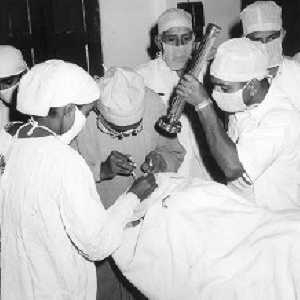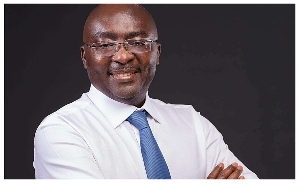Opinions of Friday, 19 May 2017
Columnist: Albert Amagyei
Pain management barriers in surgeries
There is obvious pain after every surgical operation regardless of the site that patient reports.
Patients usually have poor understanding of pain management which results in low expectations of pain relief and patient satisfaction with inadequate pain control on the part of health professionals.
Barriers to pain management can be categorized under three themes as each of these themes has a role to play during pain management.
Uncontrolled pain triggers physical and emotional stress responses which inhibit healing of surgical wounds, an increase in the risk of other complications and prolonged hospitalization.
Pain perception is varied among individuals hence pain is undermanaged in almost all institutions. Apart from the fact that pain is an important vital sign, its management in surgeries is paramount. Changes required to practice are not forthcoming due to lack of assessment and organizational practices which frequently impede the administration of analgesics and non-pharmacologic interventions.
Health policies regarding pain require that health professionals follow strict rules in administering pain medications.
Pain is however undermanaged even according to WHO guideline protocol as the “MORPHINES” and “PETHIDINE” are reserved for chronic and the so-called incapacitating pain. The problem ensues as patients themselves under report pain with difficulty in completing pain scales during pain assessment. Those that are able to communicate rightly usually irritate nurses with their consistent complains. Nurses with poor professional conduct refuse these patients the needed pain medications. Some genuinely do not have knowledge on pain medications and for the fear of causing delirium or sedation with its accompanying management with the strong opioids honestly refuse patients their medications.
Health awareness is now globalized and kudos to our health educators but with its negative impact on the part of patients receiving pain medication one is dumbfounded. Patients with full knowledge of the side effects of the pain medications reluctantly refuse to take their drugs; such patients do not bother nurses with their pain and under report pain with masked calm face. There are some fatalistic beliefs, customs and cultures of patients that is remarkable; men actually under report pain as doing so is deemed a sign of maturity.
Stories told by family members, friends who had undergone previous surgeries adding up to the individual's own fear of dying from the surgery, pain after the surgery and the thought of being a burden to the family after the surgery sums up the anxiety.
Anxiety is known to remarkably influence the level of pain. Patients go for surgery with expectation of pain with few having low expectations about pain relief. These raised anxiety often continue in the hospital when patients have to wait for long hours till they are operated; maximum time is given them to reflect on the state of pain they may be left to endure with little or no reassurance during such moments compounding their anxiousness.
The acceptance of anxiety in the perioperative period is not helpful. Most patients endure pain for fear of injections. Many share the view that pain is expected after surgery and will surely get better in a relatively short moment. Almost forgetting that acute pain can also have long lasting effects on the central nervous system as the neurons keep firing, it may result in amplification of the incoming nociceptive impulse. The central nervous system becomes hyperactive and patient may require large levels of opioids to gain comfort. Pain is harmful and can leave long term damage.
Patients will rather choose to be still in bed, not cough and remain immobilized to reporting of pain; such behaviors can lead to possible complication such as deep vein thrombosis, chest infections, increased anxiety and depression. It is therefore imperative to report pain and take necessary pain medications so that the patient can participate in simple mobilization techniques and take comfortable breaths. It is important to educate patients that pain is not harmless and should be reported rather than endured.
Pain assessment is the corner stone of pain management as it forms the basis for decisions about intervention and the evaluation of pain. Despite pain assessment techniques, some patients will naturally not respond to pain doing some procedures for reasons best known to them. It is prudent for the health professional to find out what the reason may be than to leave it unattended because that can ring a bell’ especially in children, it could signal a neurologic impairment which is equally an important issue to tackle. Reliance on observation and behaviors coupled with the utilization of a reliable and valid pain assessment tool is essential. There are specific pain scales for specific people should pain management be paramount. Some patients find it difficult to read and write; communicating easily their pain is a problem hence health professionals should be aware of this unique assessment tool as it seeks to address the barrier to effective pain management.
The assessment should focus on pain behaviors which may be associated to physiological pain indicators such as movement, facial cues, posture and guarding. Other important parameters should be assessed such as blood pressure, heart rate, temperature and respiration before administering pain medications as such vital signs can be affected by pain.
Concerns about haemodynamic status and sedation level of surgical patient pose a great concern as these analgesics can cause further deterioration. It is also not a green to leave the patient in pain. Necessary requirements are to be put in place to curb such adverse reactions. This provides the opportunity for the nurse to take into account the patient factors by considering various treatment options.
There are significant pain management barriers which can be considered when developing and disseminating policies and procedures in managing pain in surgical patients.
The writer, Albert Amagyei is a rotational nurse at Dominase SDA hospital.













